RZSS stands up for the little guys – captive breeding one of our rarest insects
13/05/2019 in Conservation
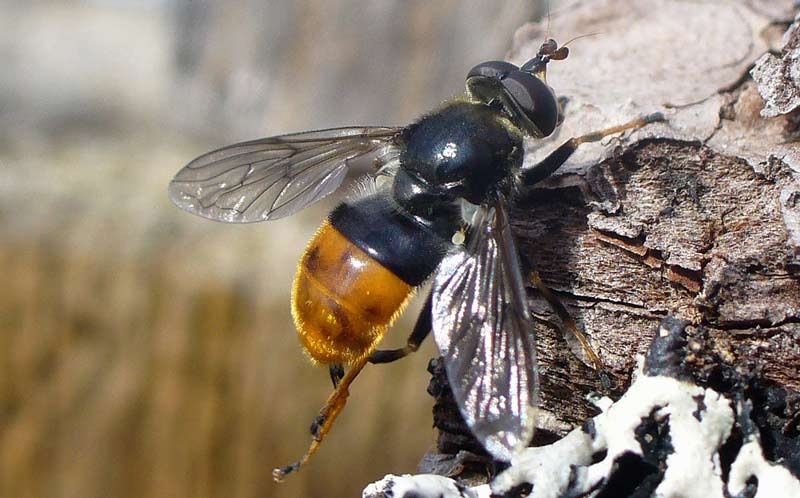
Above: An adult pine hoverfly resting on some bark - photo by Ellen Rotheray
Conservation captive breeding programs are not just for large, charismatic species with big, fancy enclosures. For some threatened species, all you need to bring them back from the brink is a few empty jam jars and hummus pots. Well, almost. Welcome to the glamorous (and surprisingly intense) world of breeding endangered insects!
As the new conservation programme manager at RZSS, I’m responsible for several high-profile projects, including the reintroduced beavers at Knapdale Forest. I’m also overseeing conservation work on lesser known native threatened species, including the critically endangered pine hoverfly (Blera fallax). What does it take to breed one of the UK’s most threatened insects? Guts, knowledge and expertise, and more care and effort than you might imagine.
The need to captive breed
They’re important pollinators and their larvae have cute little moustaches, but pine hoverflies are also one of the rarest insects in the UK. Currently known from just one forest site in the Cairngorms National Park, there are very few pine hoverflies left in the UK. This, plus their extremely limited range, puts pine hoverflies firmly on the critically endangered list in the UK redbook. The captive breeding project we’re running at RZSS Highland Wildlife Park could be the best hope to drastically boost this species' numbers in the wild.
So what about those jam jars?
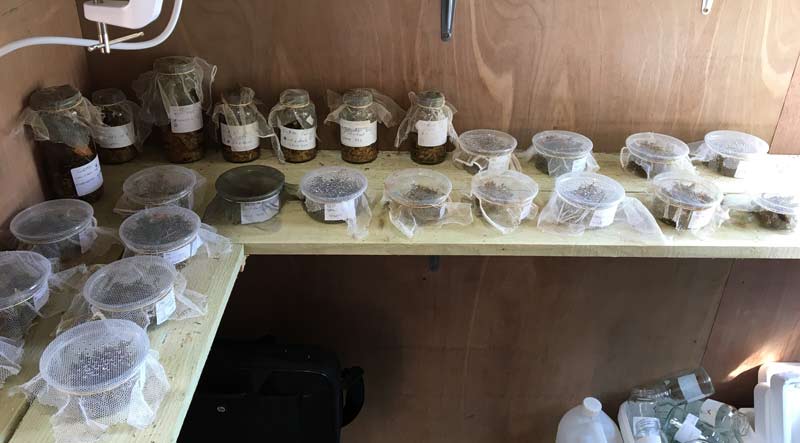
Above: Surely one of the world’s most low key captive breeding facilities: the pine hoverfly shed at RZSS Highland Wildlife Park - photo by Helen Taylor
Captive breeding pine hoverflies at RZSS takes place in a small wooden shed, with the larvae held in empty jam jars. When they turn into pupae, they are transferred into hummus pots. When the adults emerge, they live in mesh flight cages. Sounds low key? Absolutely – that’s one of the beautiful things about captive breeding insects! However, the simplicity of the equipment involved doesn’t do justice to the enormous effort put in by our keeping team. Pine hoverflies have extremely specific habitat requirements and are very delicate. To maximise their chances of survival in captivity, our team need to give these little guys a lot of attention.
In the wild, larvae would live in rot holes in older pine trees. There, they feast on a soup of nutritious bacteria that collects in these damp, dark spaces. In captivity, we replicate this by mixing pine wood chippings collected from the species’ natural habitat with rain water in a small jam jar. Typically, we keep two larvae in each jam jar. The jar also contains larger pieces of pine that the larvae can crawl up as they get ready to pupate. These pieces lead to a moss plug at the top of the jar where the pupae can hang out. The pine hoverflies at the Park are all currently at either the larva or pupa stage.
Checking in
Highland Wildlife Park Keepers Una Richardson, Vickie Larkin, and Marc Enderby conduct daily checks of all our captive pine hoverflies. They make sure the temperature is ok and spray the moss plugs to keep them nice and damp. Once a month, they very carefully remove the moss plugs to check for pupae and empty out the wood chipping “soup” to check up on the larvae. Given the delicate nature and small size of the larvae and the pupae, this is painstaking work. It takes a while to get your eye in and stop mistaking every single pine chip for a squishable larva.
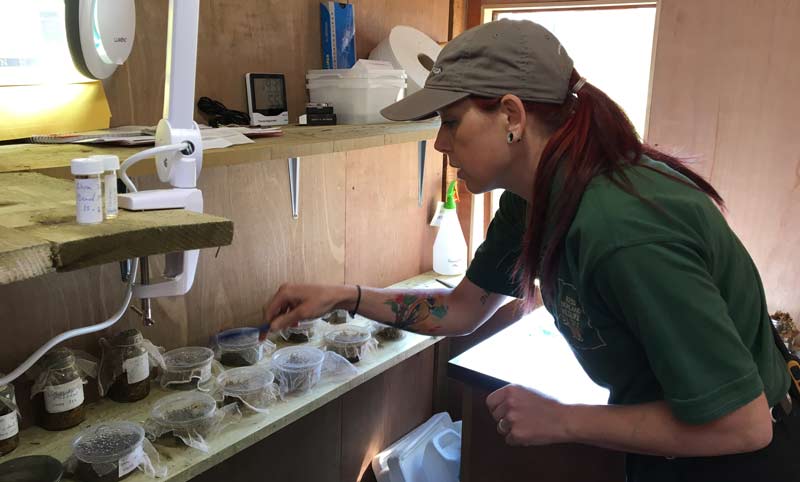
Above: RZSS Highland Wildlife Park keeper, Vickie Larkin, carefully checks the pots for larvae and pupae - photo by Helen Taylor
Below: Spot the pine hoverfly pupa nestled in the moss; Me (Helen) painstakingly picking through moss to find a pupa - photos by Helen Taylor & Vickie Larkin
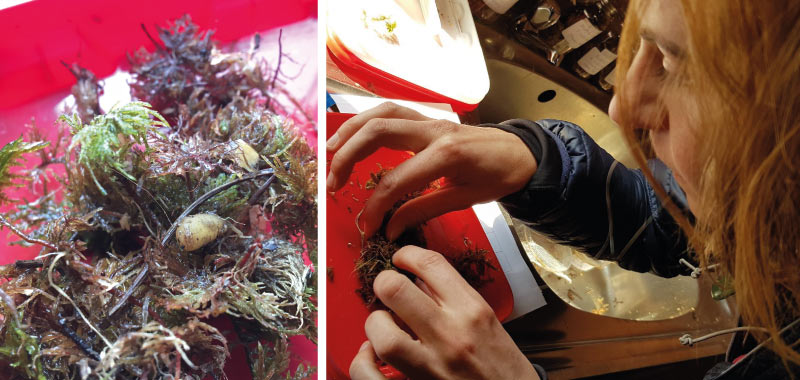
When the team find pupae, they transfer the moss plug from its jam jar and into a hummus pot. The pupa stays here while the individual inside breaks down its entire larval body and builds a new adult fly. When the adults emerge, they’ll be transferred to special flight cages fitted out with pine branch perches. Inside, they'll find plenty of their favourite nectar-bearing plants like rowan and greater stitchwort.
Onwards, to reintroduction!
The most challenging part of captive breeding pine hoverflies is getting them to lay eggs. Only Dr Ellen Rotheray has ever achieved this in captivity. Fortunately, she is also on hand as an advisor to this project. One female pine hoverfly can produce between 10-200 eggs. If even a few of our captive females lay, it could provide a huge boost to the UK population. If we can then go through another successful annual breeding cycle in captivity, we should have enough larvae to start planning reintroductions back into wild forest sites.
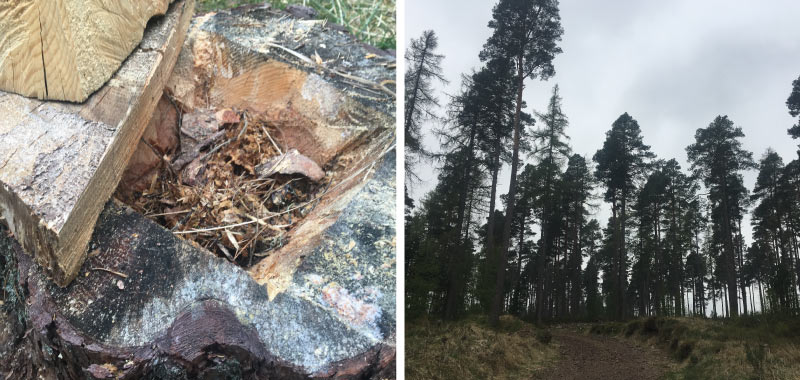
Above: A man-made potential pine hoverfly larvae home in a cut stump in Abernethy Forest (left) & Curr Wood – the last refuge of pine hoverflies in the UK (right) - photos by Helen Taylor
Meanwhile, out in the woods where pine hoverflies used to occur, a dedicated team of volunteers and folks from the RSPB, Forest Research, The Cairngorms National Park Authority, National Museums Scotland, Scottish Natural Heritage, and the Malloch Society have been out creating new breeding habitat for what is hopefully now your new favourite hoverfly. By cutting holes in existing pine stumps and filling them with sawdust and rainwater, it’s possible to create the perfect bacterial soup for pine hoverfly larvae to thrive in.
There’s still a way to go, and we’ll keep you posted on our progress here and over on our social media channels. With a bit of luck, and lot of hard work, within a few years, the woodlands in the Cairngorms will once again be pollinated by these often forgotten, but ecologically crucial flies.
Our thanks go to the Craignish Trust for their generous support for our pine hoverfly conservation breeding project.
Dr. Helen Taylor
Featured Articles

An update from the Budongo Forest
19/04/2024 in Conservation

Edinburgh Zoo named best zoo in Scotland
15/04/2024 in Edinburgh Zoo

























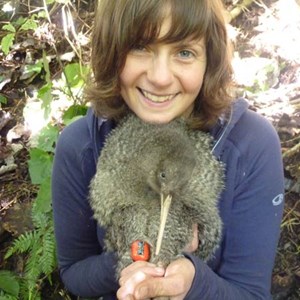
Follow EZ